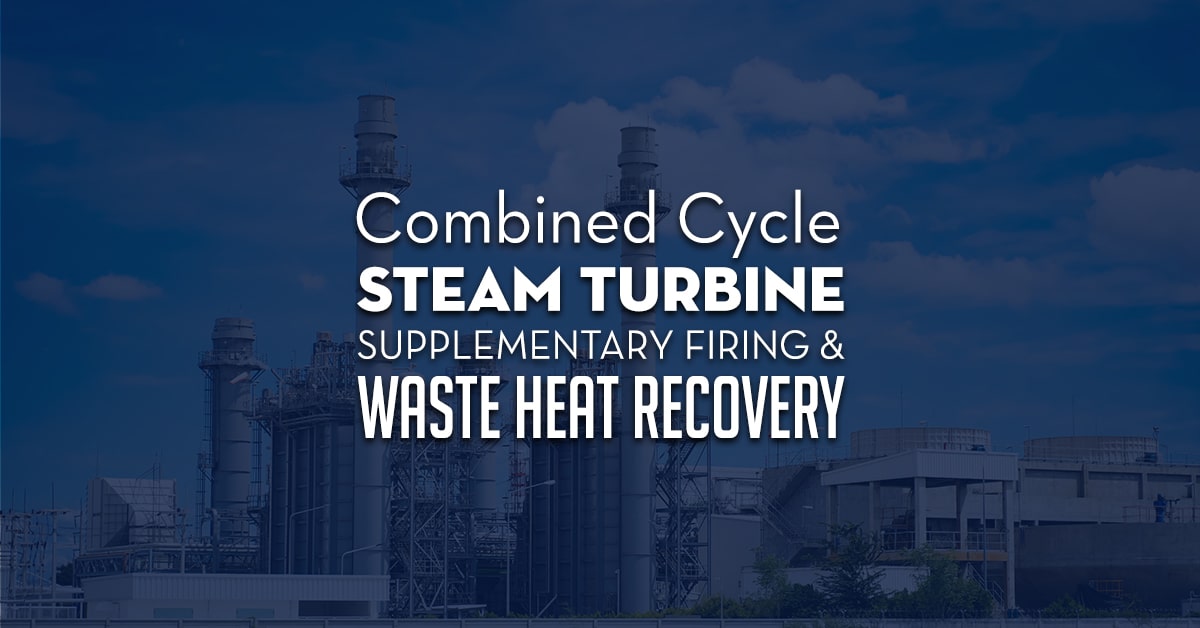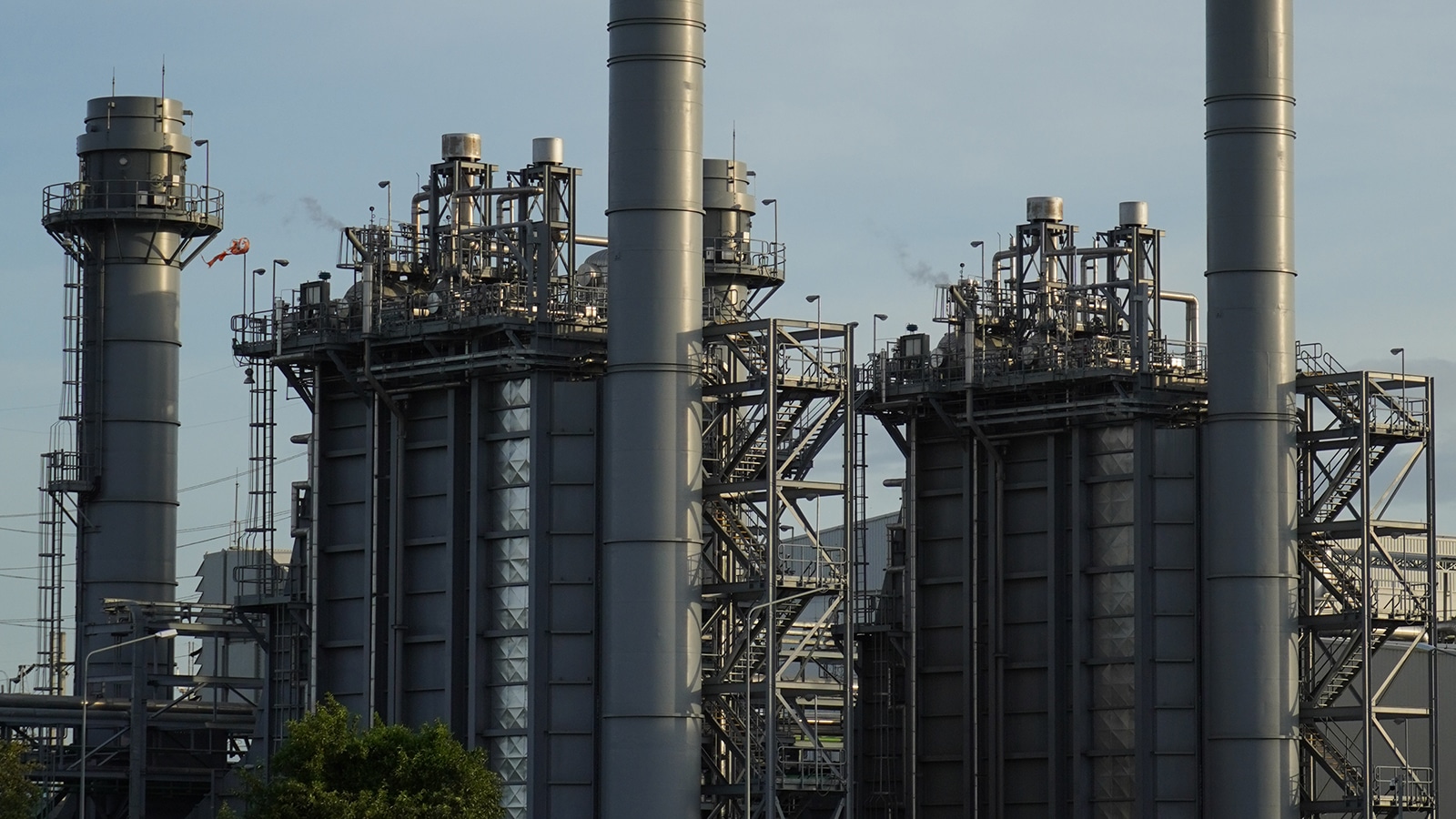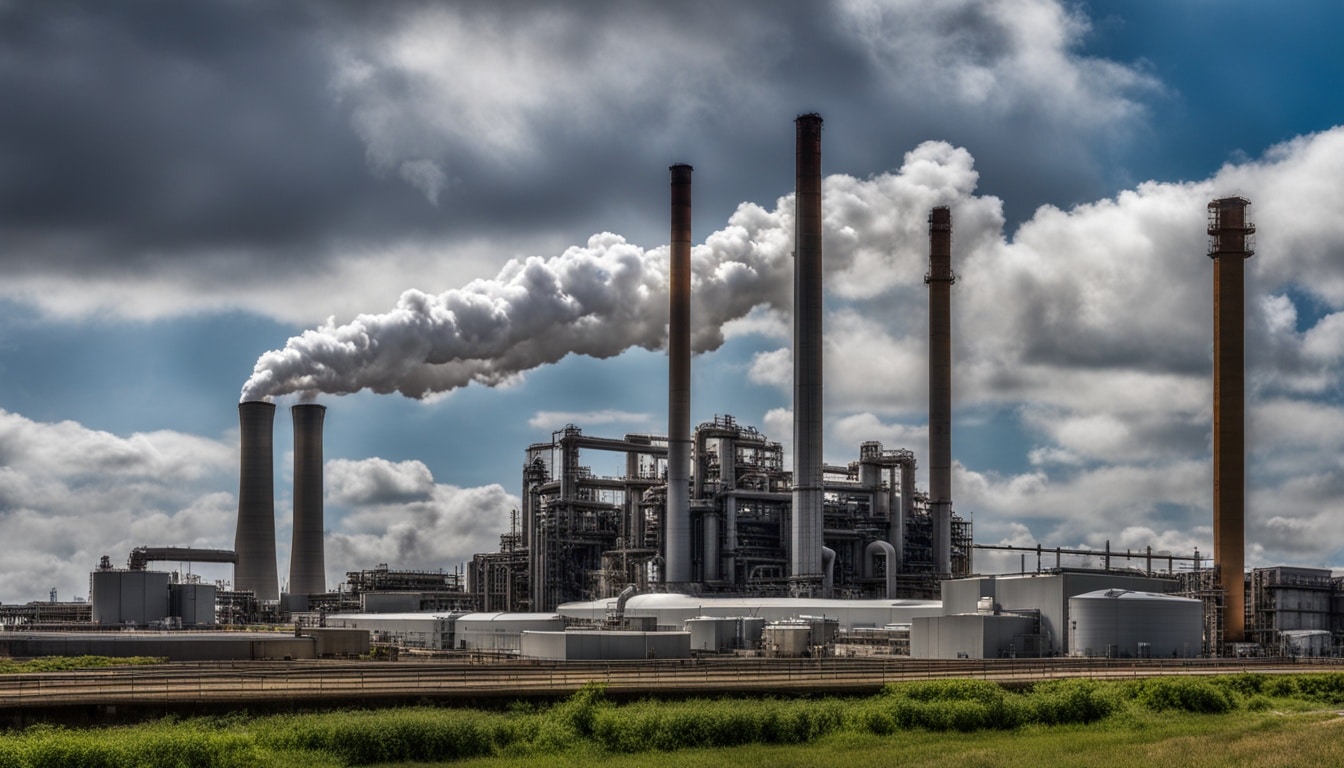Combined cycle power plants have transformed the power generation landscape, offering significant improvements in thermal efficiency and operational flexibility. These plants leverage the synergy between gas turbines and heat recovery steam generators (HRSGs) to significantly boost electricity production. The techniques of supplementary firing and waste heat recovery stand out as pivotal in this context.

Supplementary firing enhances steam production by adding fuel to the HRSG, thereby increasing power output. This method enables combined cycle plants to swiftly adjust to varying energy demands and expand their capacity as required. Conversely, waste heat recovery captures the thermal energy in the gas turbine exhaust, converting it into steam. This steam drives a secondary turbine, thereby generating more electricity.
The integration of supplementary firing and waste heat recovery in combined cycle power plants is poised to redefine power generation strategies. By optimizing these processes, we can attain elevated thermal efficiencies, diminish fuel usage, and cut emissions. Yet, it is essential to weigh the economic and environmental ramifications of these technologies to guarantee their sustainable adoption.
Key Takeaways
- Combined cycle power plants utilize gas turbines and HRSGs to maximize electricity production.
- Supplementary firing involves burning additional fuel in the HRSG to increase steam production and power output.
- Waste heat recovery captures and utilizes thermal energy from the gas turbine exhaust to improve overall plant efficiency.
- The combination of supplementary firing and waste heat recovery can significantly enhance the thermal efficiency of combined cycle plants.
- Economic and environmental considerations are crucial for the sustainable implementation of these technologies.
Introduction
Combined cycle power plants have become a symbol of efficiency and sustainability in power generation. They use both gas and steam turbines to produce power efficiently and reduce emissions. This approach, along with supplementary firing and waste heat recovery, boosts their flexibility and performance. These plants are essential for modern energy production.
Natural gas, the main fuel for these plants, is cleaner than other fossil fuels. It produces 30% less carbon dioxide than petroleum and 45% less than coal. This makes natural gas-fired combined cycle plants the cleanest option for power generation using fossil fuels.
The development of combined cycle technology has been marked by continuous innovation. Engineers have improved efficiency and flexibility since the 1960s. Today’s plants can reach thermal efficiencies over 60%, a leap from the 30% of traditional turbines.
Supplementary firing and waste heat recovery are crucial for combined cycle plants. Supplementary firing increases power output and flexibility, helping plants adapt to changing energy needs. Waste heat recovery uses the exhaust heat from gas turbines, reducing energy loss and boosting efficiency.
These technologies also aid in reducing emissions and capturing carbon. By optimizing fuel use and minimizing waste heat, they lessen the environmental impact. Captured carbon can be used in enhanced oil recovery (EOR), further reducing emissions.
As the world seeks sustainable energy solutions, combined cycle power plants lead the way. With ongoing research and technological advancements, they are crucial for meeting energy demands while protecting the environment.
Understanding Combined Cycle Steam Turbine Supplementary Firing
Combined cycle power plants, integrating gas turbines and heat recovery steam generators (HRSGs), are crucial in the chemical process industries (CPI) for efficient power generation. These plants boast gas turbines with outputs from 3 MW to 100 MW, with recent advancements reaching up to 250 MW. Gas turbines alone achieve 25% to 35% efficiency on a lower heating value (LHV) basis. When paired with an HRSG in a combined cycle, this efficiency surges to 55-60% (LHV basis).
Definition and Mechanism
Supplementary firing enhances steam generation and power output in combined cycle power plants. It employs duct burners in the HRSG to burn extra fuel, elevating the gas turbine exhaust temperature. This additional heat produces more steam, boosting the steam turbine’s power output. This flexibility allows adjusting supplementary firing to meet desired steam conditions and power levels.
Advantages of Supplementary Firing
Supplementary firing brings numerous benefits to combined cycle power plants:
- Increases operational flexibility and rapid response to electricity demand changes
- Augments power output without expanding the gas or steam turbine
- Preserves plant efficiency and steam conditions during gas turbine part-load operation
- Supports ancillary services and grid stability during peak demand
Disadvantages of Supplementary Firing
Despite its advantages, supplementary firing has drawbacks:
- Increases fuel consumption and operating costs
- Can affect overall plant efficiency if not managed well
- Subjects HRSG components to thermal stress, potentially reducing lifespan and increasing maintenance
- Requires additional capital for duct burners and control systems
- Results in higher emissions, including NOx and CO2, which must be regulated
The table below contrasts the efficiency of combined cycle power plants with and without supplementary firing:
| Plant Configuration | Efficiency (LHV basis) |
|---|---|
| Gas Turbine Only | 25-35% |
| Combined Cycle (Gas Turbine + HRSG) | 55-60% |
| Combined Cycle with Supplementary Firing | Up to 75-85% |
In conclusion, supplementary firing significantly boosts the performance and flexibility of combined cycle power plants. Yet, its implementation demands a thorough evaluation of both benefits and drawbacks to ensure optimal operation and efficiency.
Exploring Waste Heat Recovery in Combined Cycle Power Plants
Waste heat recovery is essential in combined cycle power plants, harnessing thermal energy from gas turbine exhaust. This process boosts energy efficiency, cuts fuel use, and lowers emissions. The HRSG, a critical component, recovers waste heat to produce steam for the steam turbine.
In the U.S., over half of the 491 gigawatts of natural gas-fired capacity comes from combined-cycle systems. These systems have an average operating heat rate of 7,146 Btu/kWh, significantly lower than simple-cycle systems. The West County Energy Center, the largest natural gas combined-cycle plant, has a total capacity of 3,777 MW and produced 20.3 terawatthours of electricity in 2021.
Definition and Mechanism
The process of waste heat recovery in combined cycle power plants captures thermal energy from gas turbine exhaust and transfers it to the water/steam cycle via the HRSG. The HRSG, a heat exchanger, includes economizer, evaporator, and superheater sections. These sections heat the water, generate steam, and superheat it for the steam turbine.
Benefits of Waste Heat Recovery
Waste heat recovery brings numerous advantages to combined cycle power plants:
- Increased overall plant efficiency
- Reduced fuel consumption
- Lower greenhouse gas emissions
- Water conservation through steam condensation and reuse
- Operational cost savings due to fuel savings and increased power output
By harnessing waste heat, combined cycle plants can produce more electricity without using more fuel. This leads to higher efficiency and a reduced environmental footprint.
| Gas Turbine Model | Manufacturer | Key Features |
|---|---|---|
| GE 9HA, GE 7HA, GE LM6000 | General Electric | High efficiency and flexibility |
| Siemens SGT6-8000H, SGT5-4000F, SGT-A65 | Siemens | High operational flexibility and low emissions |
| M701JAC, M501JAC, M501F | Mitsubishi Power | High efficiency and low NOx emissions |
Limitations of Heat Waste Recovery
Despite its benefits, waste heat recovery in combined cycle plants faces challenges. The HRSG design is crucial, and factors like exhaust temperature, mass flow rate, and composition must be considered. Heat exchanger fouling due to exhaust contaminants can reduce efficiency and require maintenance.
Optimizing the steam cycle for the available heat from the gas turbine exhaust is complex, especially during part-load or varying conditions. Integrating waste heat recovery systems increases plant complexity, requiring advanced control strategies and skilled operators. The capital costs of the HRSG and other components must be weighed against efficiency gains and savings.
Comparative Analysis: Supplementary Firing vs. Waste Heat Recovery
When assessing combined cycle power plants, it’s vital to look at how supplementary firing and waste heat recovery affect efficiency, power output, and flexibility. Both strategies aim to boost performance but differ in their methods and benefits.
Efficiency and Performance Comparison
Waste heat recovery is key in modern combined cycle plants, using exhaust gas thermal energy to generate more power through the steam turbine. This process significantly boosts efficiency, with plants reaching thermal efficiencies up to 60%. Supplementary firing, however, involves burning extra fuel in the HRSG to increase steam production and power output. While it can enhance capacity, it might slightly decrease overall efficiency due to increased fuel use and higher heat rates.
The efficiency impact of supplementary firing varies based on HRSG design, supplementary firing amount, and gas turbine operating conditions. Gas turbines typically produce about 60% of the power, with steam turbines making up the rest. The energy transferred to the HRSG equals the gas turbine’s rated output under design conditions.
Economic Considerations
The choice between supplementary firing and waste heat recovery also involves economic factors like capital and operating costs, and revenue potential. Waste heat recovery systems, including the HRSG, are a major investment but offer efficiency gains and fuel savings over the plant’s life. Supplementary firing requires capital for duct burners and control systems and ongoing costs for extra fuel.
The economic viability of supplementary firing hinges on fuel prices, electricity market conditions, and the plant’s role in meeting peak demand or providing ancillary services. Plants with both waste heat recovery and supplementary firing can tap into various revenue streams, including baseload power, peaking capacity, and ancillary services, based on market conditions and operational strategies.
| Parameter | Supplementary Firing | Waste Heat Recovery |
|---|---|---|
| Capital Costs | Additional costs for duct burners and control systems | Significant investment in HRSG and associated components |
| Operating Costs | Higher fuel consumption and associated costs | Reduced fuel consumption and costs due to improved efficiency |
| Revenue Potential | Increased power output during peak demand periods | Consistent baseload power generation and fuel savings |
Environmental Impact Assessment
The environmental impact of supplementary firing and waste heat recovery in combined cycle plants is crucial, given growing concerns about climate change and air quality. Waste heat recovery reduces fuel consumption and improves efficiency, lowering greenhouse gas emissions and the carbon footprint. Supplementary firing, by contrast, increases fuel consumption and emissions, including NOx and CO2, which may face environmental regulations and carbon taxes.
The air quality impact of supplementary firing depends on factors like fuel type, combustion efficiency, and emission control technology. For instance, a new supplementary firing burner can achieve NOx emission levels below 60 ppm at 02 = 0.7, showing the potential for reducing environmental impact through technology.
Applicability and Flexibility
The suitability and flexibility of supplementary firing and waste heat recovery in combined cycle plants depend on design, operational needs, and market conditions. Waste heat recovery is a standard feature, enhancing efficiency and cutting fuel costs. Supplementary firing is an optional feature for additional flexibility and grid stability during high demand periods.
As energy market trends evolve and renewable energy sources increase, combined cycle plants with supplementary firing will be crucial for providing dispatchable capacity and supporting grid reliability. For example, wind power capacity is expected to rise from 3.1% in 2014 to 12.7% in 2029, affecting electricity demand and plant flexibility. NGCC power plants show flexibility in adjusting output to demand, highlighting the need to evaluate flexibility in decarbonization alternatives for the electricity market.
Summary
Combined cycle steam turbine power plants are at the forefront of efficient and sustainable power generation. They outperform traditional single-cycle plants by integrating gas and steam turbines. This integration, along with waste heat recovery and supplementary firing, can reach thermal efficiencies up to 60%. This results in a nearly 50% reduction in fuel consumption, making them a cost-effective solution for energy demands.
Waste heat recovery, enabled by heat recovery steam generators (HRSGs), is essential for maximizing thermal energy use and improving plant efficiency. Supplementary firing adds to operational flexibility, allowing plants to swiftly adapt to changing electricity demand. This flexibility enables participation in ancillary service markets and supports grid stability. The choice between supplementary firing and waste heat recovery depends on factors like plant design, operational needs, economic factors, and environmental impact.
As the energy landscape shifts towards sustainability, combined cycle plants with waste heat recovery and supplementary firing will remain crucial. Advancements in gas turbine technology, HRSG design, emission control systems, and operational strategies will continually improve their performance and environmental benefits. These plants are set to play a pivotal role in the global energy transition by reducing greenhouse gas emissions and utilizing clean-burning natural gas.
Frequently Asked Questions
What is a combined cycle power plant?
A combined cycle power plant is a facility that uses both a gas turbine and a steam turbine to produce electricity. The gas turbine burns fuel and powers a generator. Meanwhile, the hot exhaust from the gas turbine is used to create steam in a heat recovery steam generator (HRSG). This steam then drives a steam turbine to generate more electricity.
How does supplementary firing work in a combined cycle plant?
Supplementary firing adds extra fuel to the HRSG to increase steam production and power output. This is done by installing duct burners in the HRSG. These burners heat up the gas turbine exhaust, creating more steam to power the steam turbine.
What are the advantages of supplementary firing in combined cycle plants?
Supplementary firing brings several benefits, including increased operational flexibility and quick response to electricity demand changes. It also allows for power augmentation without needing larger gas or steam turbines. This method helps maintain efficiency during part-load operation.
What is waste heat recovery in combined cycle power plants?
Waste heat recovery captures the thermal energy in the gas turbine exhaust to generate steam for the steam turbine. This process uses a heat recovery steam generator (HRSG) as a heat exchanger. It transfers energy from the hot exhaust gases to the water/steam cycle, enhancing plant efficiency.
How does waste heat recovery benefit combined cycle power plants?
Waste heat recovery significantly boosts plant efficiency. By using the thermal energy in the exhaust, combined cycle plants can produce more electricity without using more fuel. This results in lower fuel consumption, reduced greenhouse gas emissions, and water conservation.
What factors influence the choice between supplementary firing and waste heat recovery in combined cycle plants?
The choice between supplementary firing and waste heat recovery hinges on several factors. These include plant design, operational needs, economic factors, and environmental impact. Waste heat recovery generally offers higher efficiency gains, while supplementary firing provides operational flexibility. The decision also involves evaluating capital and operating costs, revenue potential, and environmental regulations compliance.
How do combined cycle plants with supplementary firing and waste heat recovery contribute to a cleaner energy future?
These plants are key to efficient, flexible, and sustainable power generation. They achieve high thermal efficiencies, reduce fuel use, and lower greenhouse gas emissions compared to traditional plants. As the world moves towards cleaner energy, these technologies will support grid stability and reliability while reducing environmental impact.

